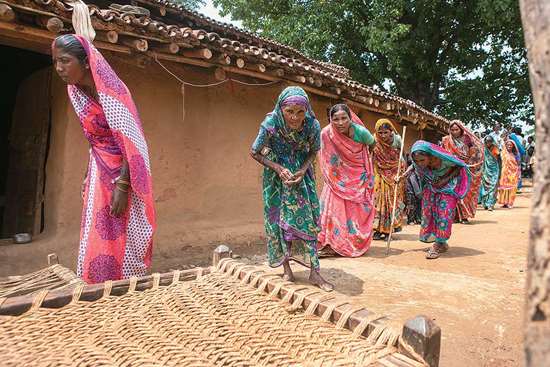by PRIYADARSHINI SEN
 Unseen weight Women in Rohiniya Damad village
Unseen weight Women in Rohiniya Damad village
Some 96 km south of Varanasi, the late autumn afternoon sun setting over the low-lying Vindhyas, opulent forests and the winding Son river defining Sonbhadra’s rich tapestry of landscape, nothing warns you about the long night that is Bagesati. Sonbhadra is the second largest district of Uttar Pradesh, a panhandle in its southeast, sharing a border with four other states—Madhya Pradesh, Jharkhand, Chhattisgarh and Bihar—and Bagesati is, well, a village on all fours.
Eerie darkness looms overhead, below it’s a scene straight out of Zombieland. People amble by slowly, bent, stumbling, their gazes vacant, overcome intermittently by uncontrollable trembling. Sandhya, 14, is sprawled on the floor of the courtyard outside her tenement, unmoving, lifeless, detached, just staring out with glassy eyes. “The abnormal one,” her parents tell everybody. “She was such a sprightly kid,” says her father Jagjivan. “But for the last six-seven years, she has been complaining of severe joint aches, numbness and muscle-twitching. Slowly she started withdrawing from everything.”
Morning dispels the darkness, only to reveal more despair. It’s a tiffin break at the ramshackle school building in the village. Children file out, their bodies contorted, some paralysed, teeth putrid and a few with obvious mental disorders. Their mothers, with crooked backs and bow-shaped legs, wait outside. Rakesh, 22, has convulsions from time to time. “I get tremors all over my body. My arm is slowly becoming immobile,” he says. Half his body started developing deformities eight years ago.
Outlook India for more
